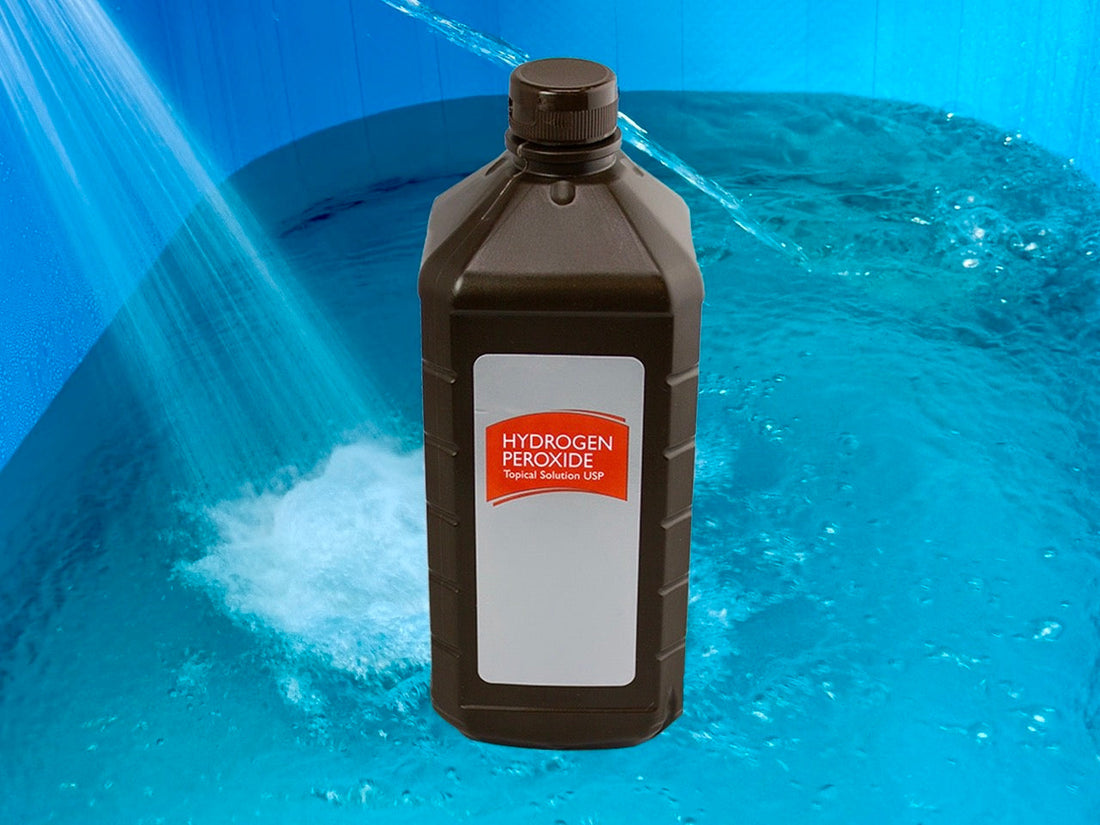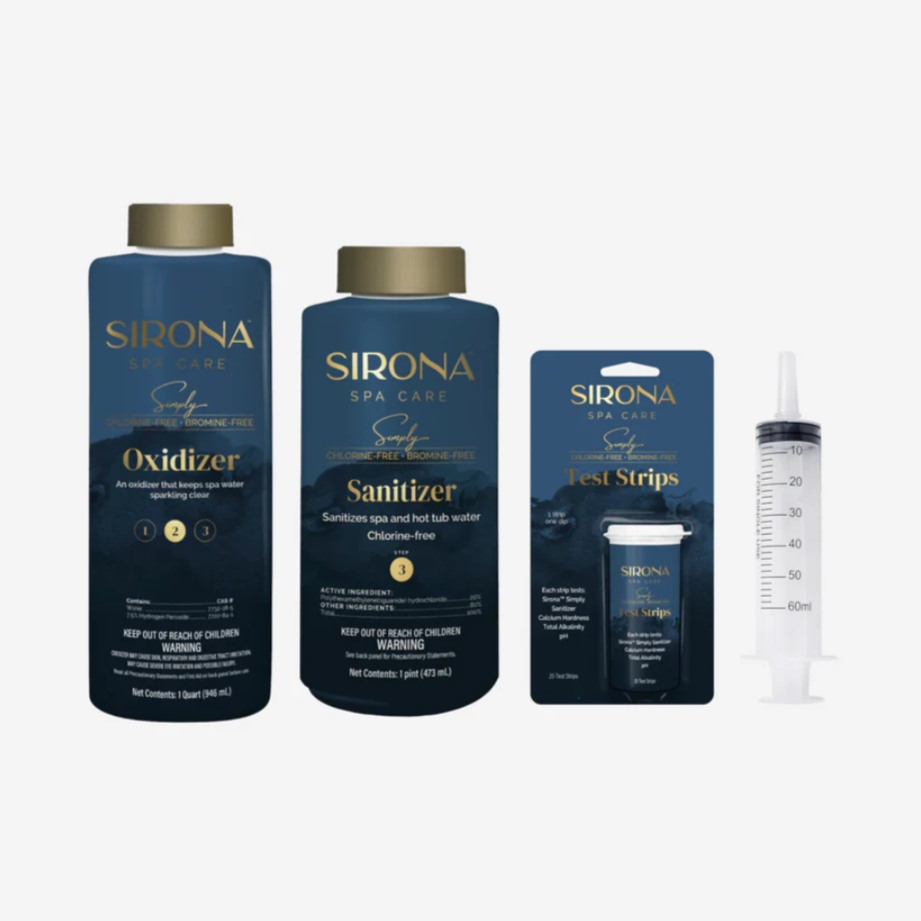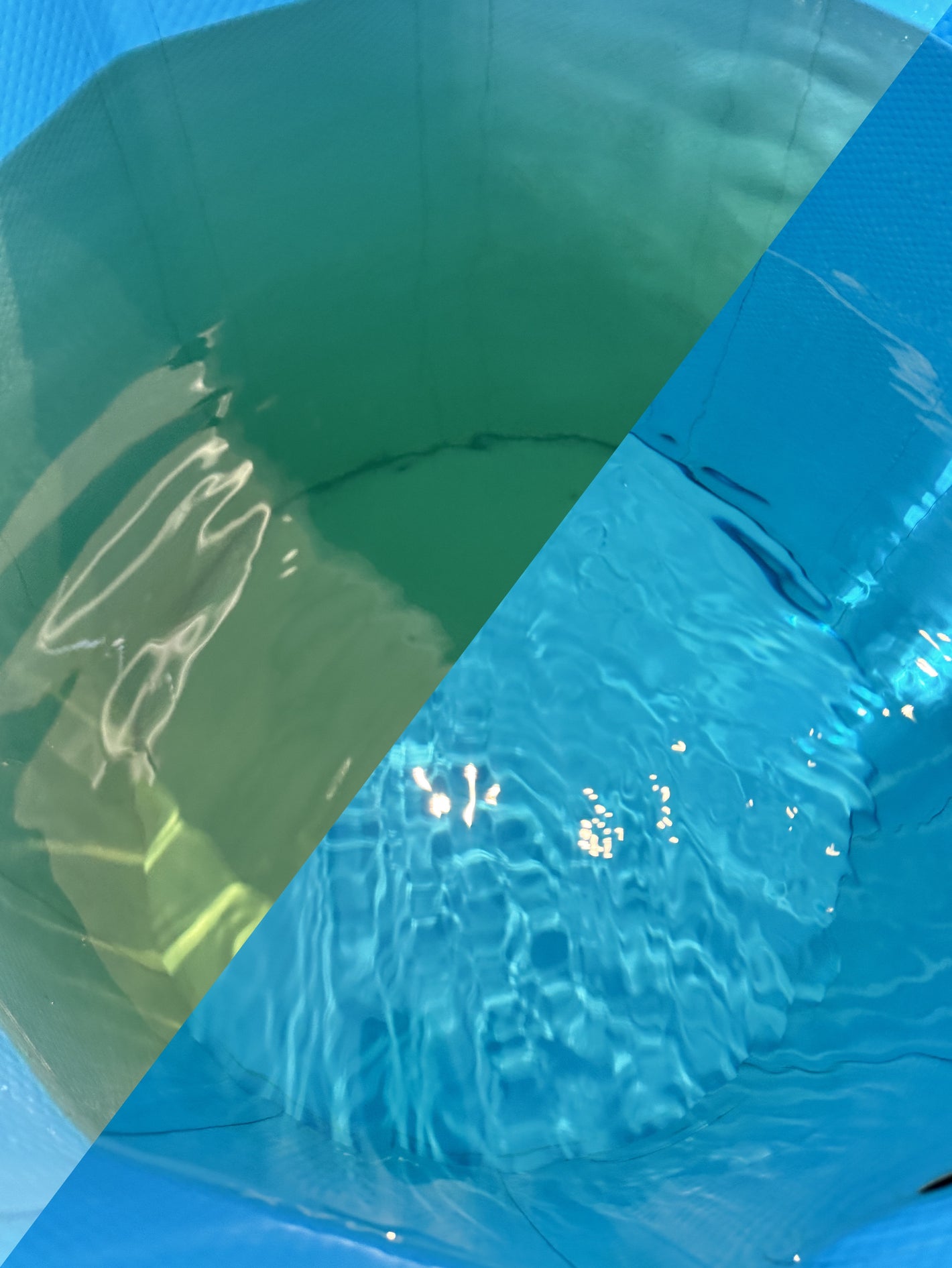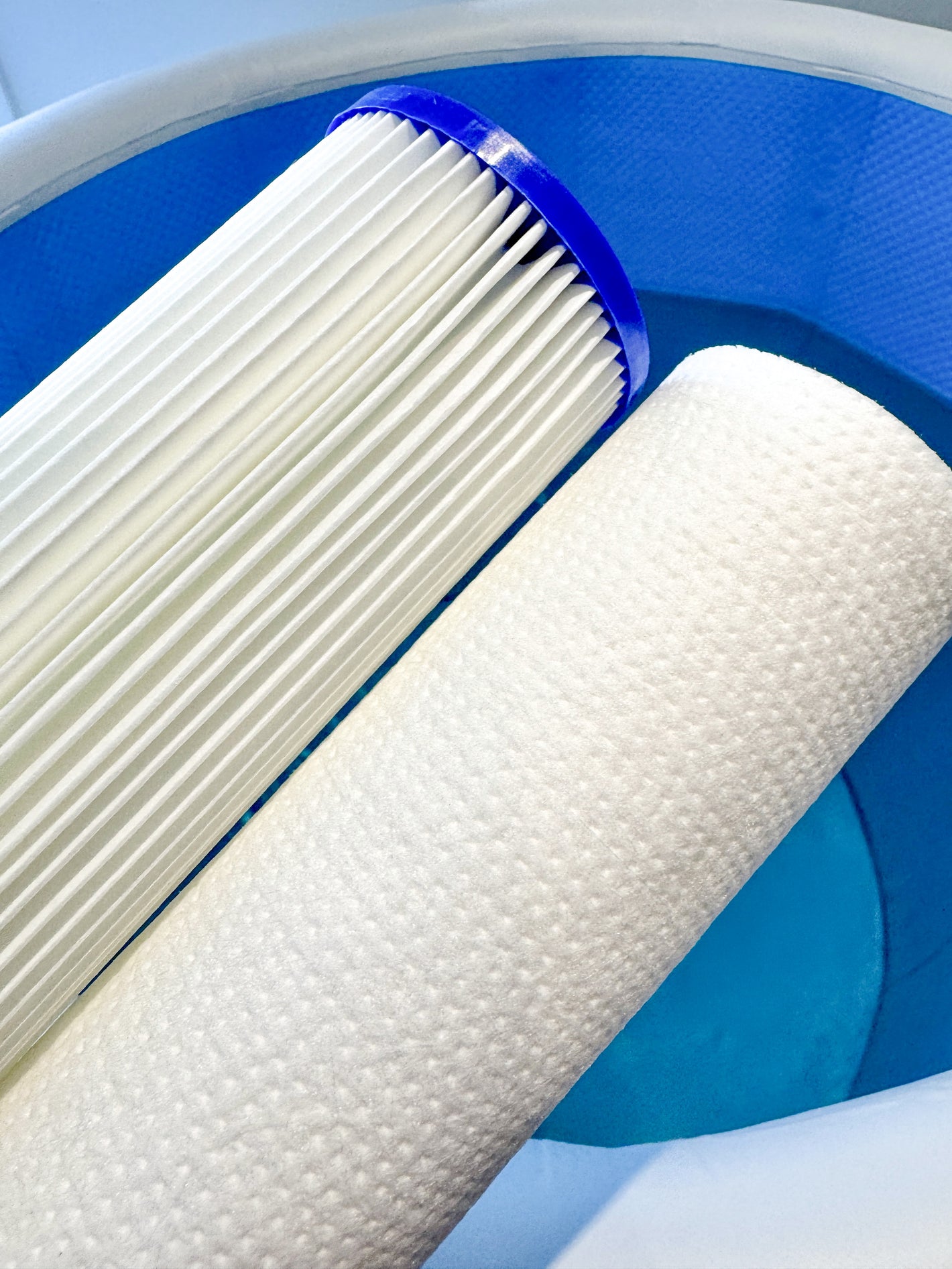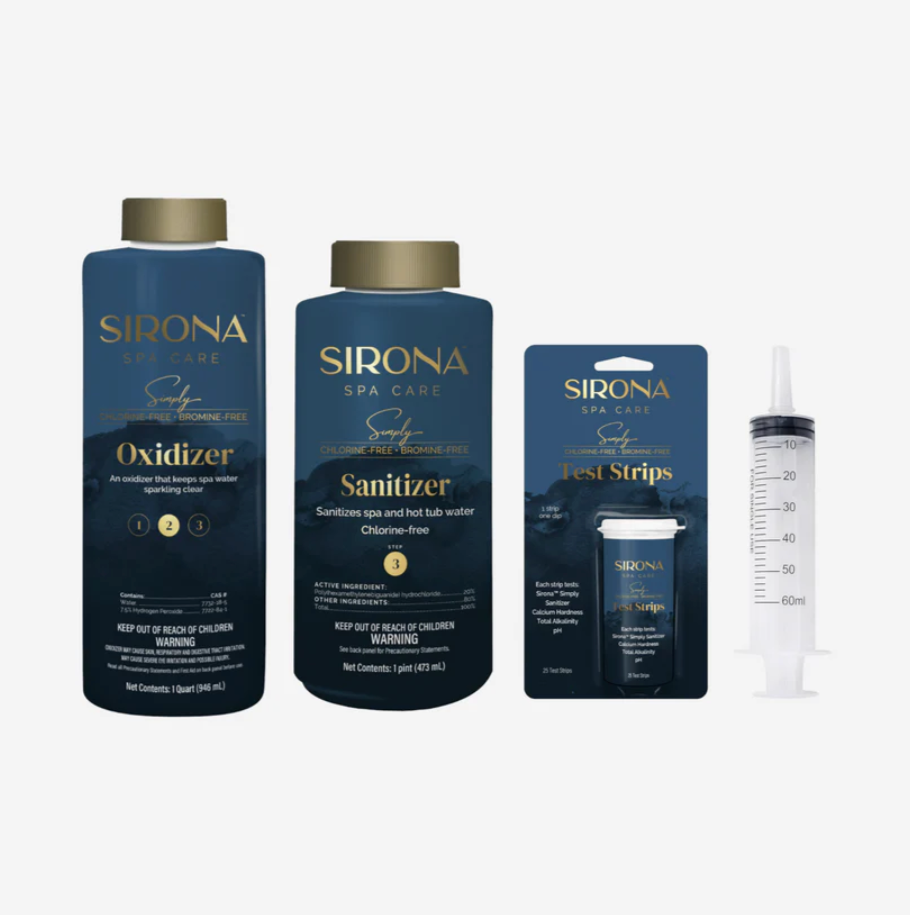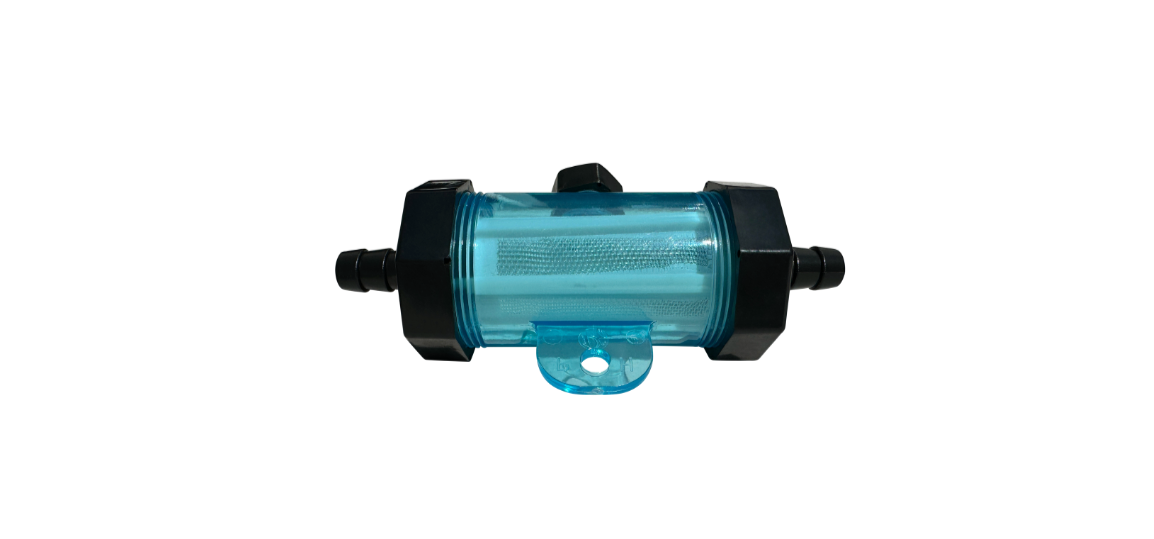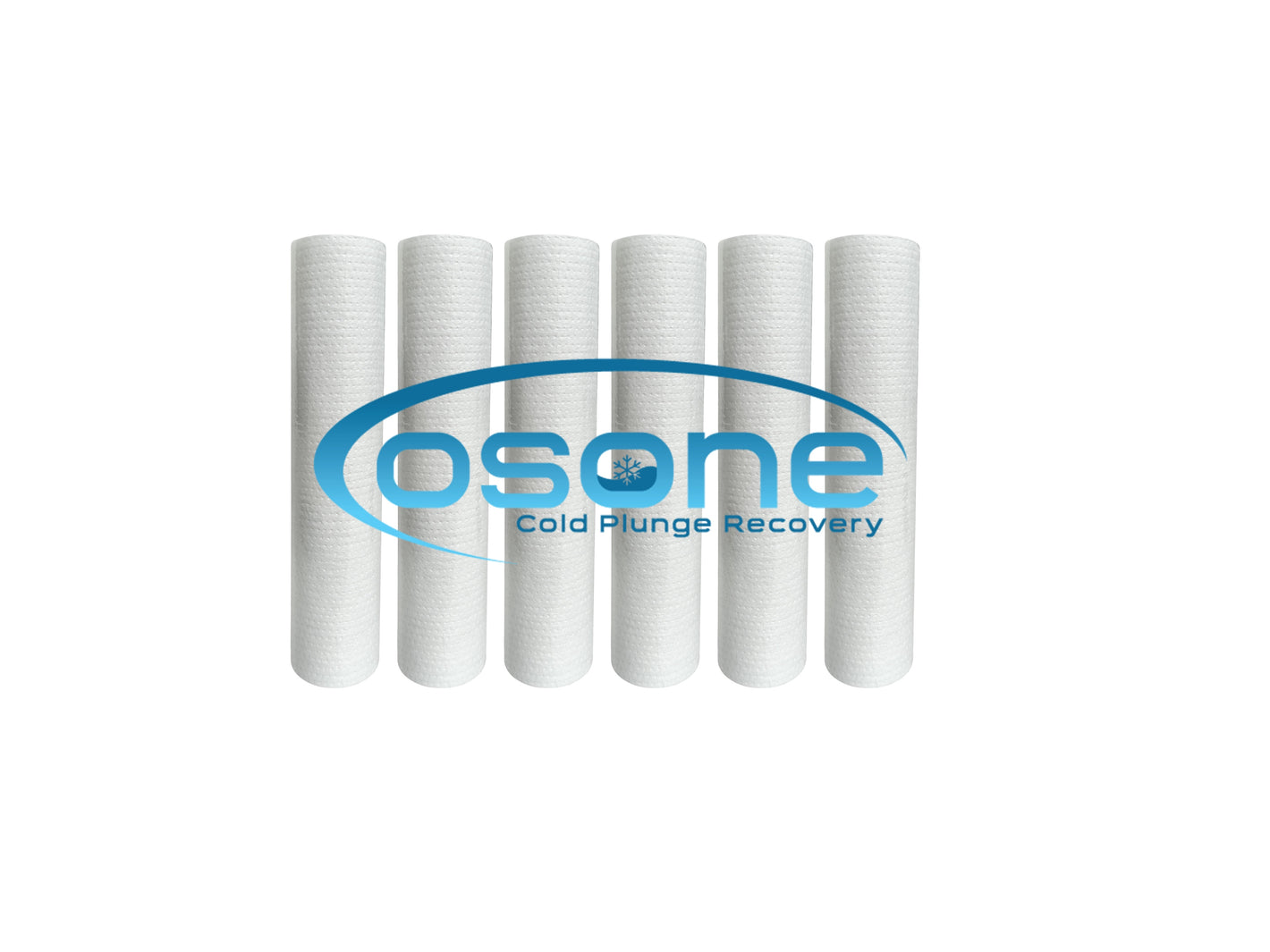While the primary focus of cold plunging is usually the water temperature, maintaining water cleanliness and hygiene is equally important. One proposed method for keeping cold plunge water clean is using hydrogen peroxide. This article explores the risks, benefits and the correct dosage of Hydrogen Peroxide in Cold Plunging.
Understanding Hydrogen Peroxide
Hydrogen peroxide (H₂O₂) is a chemical compound often used as a disinfectant, bleaching agent and antiseptic. It is composed of water (H₂O) with an additional oxygen molecule making it highly reactive. Its oxidizing properties enable it to break down organic matter and kill bacteria, viruses, fungi, and algae, making it a popular choice for sanitation in various settings.
Hydrogen peroxide is available in different concentrations, typically ranging from 3% (common household strength) to 35% (industrial or food-grade strength). For cold plunges, 35% food-grade hydrogen peroxide is often recommended because it lacks stabilizers or additives that may be harmful.
The Role of Hygiene in Cold Plunging
Hygiene in cold plunging is critical for several reasons:
- Preventing Contamination: Cold plunge water can become contaminated with bacteria, sweat, oils, and debris from the skin, especially with repeated use. Rinsing with a hose beforehand is a simple way to prevent tracking debris, often stuck to the feet, into your Cold Plunge.
- Minimizing Risk of Infections: Dirty water can harbor harmful microorganisms, leading to skin irritations, rashes or infections.
- Reducing Maintenance Costs: Effective sanitation methods can extend the lifespan of your cold plunge equipment and reduce the need for frequent water changes.
Is Hydrogen Peroxide Safe for Cold Plunging?
The safety of hydrogen peroxide in cold plunging depends on proper use and understanding its chemical properties. Here are some key considerations:
1. Effectiveness as a Sanitizer
Hydrogen peroxide is an effective sanitizer at appropriate concentrations. It works by releasing oxygen when it reacts with organic matter, breaking down contaminants. At low concentrations, it’s generally safe for human skin and does not leave harmful residues as it decomposes into water and oxygen.
2. Potential Risks
Although hydrogen peroxide is a natural and biodegradable substance, improper use can pose risks:
- Skin Irritation: High concentrations can cause skin irritation, burns or bleaching effects. 35% hydrogen peroxide is highly concentrated. Always wear gloves when handling and store safely out of reach of children and pets.
- Eye Damage: Contact with eyes can lead to irritation or serious damage.
- Respiratory Issues: Inhalation of vapors from high concentrations can irritate the respiratory tract.
- Chemical Reactions: Hydrogen peroxide is reactive and can interact with certain materials, including metals, which may affect cold plunge components.
3. Concentration Matters
For cold plunges, it’s crucial to use the correct concentration. 35% food-grade hydrogen peroxide must be diluted properly to avoid harm. We will go over the mix of hydrogen peroxide into your Cold Plunge in the next section.
How to Use Hydrogen Peroxide Safely in Cold Plunging
When deciding to use hydrogen peroxide to maintain water cleanliness in your Cold Plunge, follow these guidelines to ensure safety and effectiveness:
1. Choose the Right Product
- Use 35% food-grade hydrogen peroxide to avoid exposure to stabilizers and impurities found in non-food-grade products.
- Avoid using hydrogen peroxide with additives, fragrances, or dyes.
2. Dilution Is Key
- Dilute to a safe concentration: When using 35% food-grade hydrogen peroxide, the dilution occurs with the water in your Cold Plunge.
- To create a 3% solution from 35% hydrogen peroxide, we will be mixing 1 part hydrogen peroxide with 12 parts water.
3. Determine Dosage
- If using 35% hydrogen peroxide, use 54mL to 108mL of hydrogen peroxide per 100 gallons of cold plunge water. Start with the lower dose and adjust based on water clarity, odor and desired effect. Test ppm to ensure results land between 50-100 parts per million (ppm).
- ppm=volume of water (ml)volume of H₂O₂ (ml)×H₂O₂ concentration×106
- Water volume in Cold Plunge = 100 gallons = 378,541mL
- H₂O₂ concentration = 35% = 0.35 (as a decimal)
- For 50 ppm: Volume of H₂O₂=0.35×10650×378,541=54mL or 1.8oz
- For 100 ppm: Volume of H₂O₂=0.35×106100×378,541=108mL or 3.7oz
- Adjust the dosage based on the gallons of water in your Cold Plunge.
- This is a common guideline for maintaining water cleanliness without causing harm to skin or equipment.
4. Monitor Water Quality
- Regularly test the water to ensure the hydrogen peroxide concentration remains within safe limits. Overuse can lead to skin irritation or equipment damage.
- Use a hydrogen peroxide test kit to monitor levels. For safe cold plunging, the recommended hydrogen peroxide concentration is between 50-100 parts per million (ppm); this level is considered effective for sanitation while minimizing potential skin irritation.
5. Avoid Mixing with Other Chemicals
- Do not combine hydrogen peroxide with other cleaning agents, such as chlorine or bromine. This can result in harmful chemical reactions.
- Rinse your tub thoroughly before switching to hydrogen peroxide if other chemicals were previously used.
6. Storage and Handling
- Store hydrogen peroxide in a cool, dark place, as it breaks down quickly when exposed to light and heat.
- Use protective gloves and goggles when handling high-concentration hydrogen peroxide to prevent accidental exposure.
7. Establish a Maintenance Routine
- Add hydrogen peroxide to your cold plunge as part of a weekly maintenance schedule.
- Clean and scrub the tub periodically to remove any biofilm or residue.
When To Avoid Using Hydrogen Peroxide
While hydrogen peroxide is generally safe when used properly, there are situations where it may not be the best choice:
- High-Volume Public Use: For heavily used or commercial cold plunges, hydrogen peroxide alone may not provide sufficient sanitation compared to chlorine or bromine.
- Poor Ventilation: In poorly ventilated areas, hydrogen peroxide vapors from high concentrations may cause irritation.
- Metal Tub Components: If your cold plunge tub contains metal parts, hydrogen peroxide’s oxidizing properties may accelerate corrosion.
In conclusion, hydrogen peroxide can be a safe and effective way to maintain water hygiene in a cold plunge, provided it is used correctly. Its eco-friendly, non-toxic properties make it an appealing alternative to traditional sanitizers like chlorine. However, safety depends on choosing the right concentration, proper dilution, and adherence to maintenance routines.
Alternatives to Hydrogen Peroxide
If you’re uncertain about using hydrogen peroxide, there are alternative methods to maintain water cleanliness:
- Filtration Systems: High-quality filters can remove debris, bacteria, and algae from cold plunge water. The smaller the micron rating, the more debris the filter will catch. For example, a 5 micron filter will catch more than a 20 micron filter.
- UV Sterilizers: UV light is an effective method in controlling and killing bacteria and viruses.
- Ozone: Ozone gas is another effective method to sanitize water effectively. Precaution should be taken for ventilation when using this method.
Each method has its pros and cons, so consider your specific needs, budget, and sensitivity to chemicals when choosing a water sanitation solution.
By understanding the risks and following best practices, you can enjoy the benefits of clean and sanitary water without compromising your health or the integrity of your cold plunge equipment. Always consult the manufacturer’s guidelines for your cold plunge system to ensure compatibility with hydrogen peroxide or any other cleaning method.

